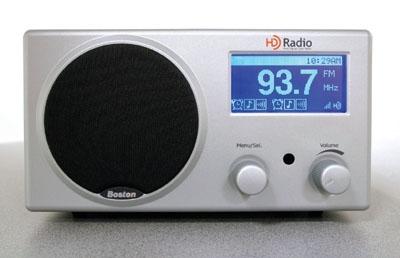HD Radio: Ready for Prime Time?

Digital sound from FM and AM? It's here, in the form of HD Radio, which drapes digital data like saddlebags over the existing FM and AM carrier waves. Broadcasters already use that added digital capacity to enhance their signals' sonics, to carry several programs at once, and to tell you what they're transmitting. Soon, they'll also use it to flash local weather, traffic, and emergency alerts. HD Radio gives you better sound, more listening choices, and useful alerts - all without a monthly subscription fee.
When I last wrote about HD Radio ("Digital Radio Comes Down to Earth," May 2003), only a couple dozen stations were on the air. Today, more than half the radio listeners in America are within range of an HD station (see "Where the Stations Are"), and by 2007, almost everyone will live within range of a station, according to HD Radio's parent company, iBiquity Digital. More than 500 of the 13,000 FM and AM stations in the U.S. are on the air with HD today. The total is expected to climb to 2,500 over the next four years, largely from several major groups of station owners (such as Clear Channel, Cox Radio, Cumulus, and Infinity Broadcasting) that have announced HD plans.
NEW AND IMPROVED HD Radio offers better sound than AM and FM, and its signals are free of problems like multipath interference, which can make the sound of an FM station break up, often rendering it unlistenable. Static disappears and background hiss is minimized as well, even on AM. At its best, HD can give AM stations the clean sound and wide frequency range of good FM, and it can nudge FM sound toward CD quality. HD even allows FM stations to broadcast in surround (which several stations have done experimentally).
A station's digital listening area is actually slightly smaller than its analog one, but the sound of the digital signal doesn't gradually break up as you drive farther away from the station's transmitter. When the signal does get too weak, though, your receiver reverts to analog mode. By that point, the station's analog FM or AM signal is usually noisy but still listenable.
To fit into an occupied radio channel, HD Radio has to use fairly low bit rates - 96 kilobits per second (kbps) on FM and 36 kbps on AM. Nevertheless, HD FM stations can split their digital bandwidth into as many as eight channels. This multicasting system is already in use at 24 FM stations and will be used by at least 20 more stations later this year.
The more channels an HD signal carries, the fewer bits it can spare for each, so the lower each channel's fidelity. But tests show that rates down to 48 kbps sound like "CD quality" to typical, less critical listeners. Even at low bit rates, these signals are free from interference, but frequency range can suffer, so few stations are likely to multicast more than two 48-kbps signals at a time. These extra channels will usually appear as additional stations on the dial, labeled with the station call letters plus "HD-2," "HD-3," and so on. They can be tuned in like any other station and are assignable to station presets. But some car receivers aren't able to receive multicasts.
NEED THE INFO HD Radio can also give you text information. Besides station call letters, your radio can display the name of the current program, topic, or musical selection, the name of the band or performers, or other information for each multicast channel. It all depends on what the station chooses to broadcast.
New uses for HD Radio will arise as fast as broadcasters can think them up. There's talk of adding the TiVo-like ability to store and scan through programs, and of having a button you can press if you want more information on the artist, tune, and album you're listening to.
Since about a third of radio listening is in cars, the first HD receivers sold were Kenwood and Panasonic in-dash models. And your next car might come with HD. BMW offers it as a $500 option for its deluxe 7 Series and 6 Series cars, and iBiquity says seven other car brands will add HD over the next few years, although the car brands haven't been announced.
Home listeners couldn't get HD Radio until this year, but there will soon be a variety of components to choose from, including receivers, standalone tuners, and tabletop systems (see "Here's the Gear"). But anyone who wants an HD portable will have to wait for less power-hungry chip sets to arrive, probably in a year or two.
- Log in or register to post comments






























































